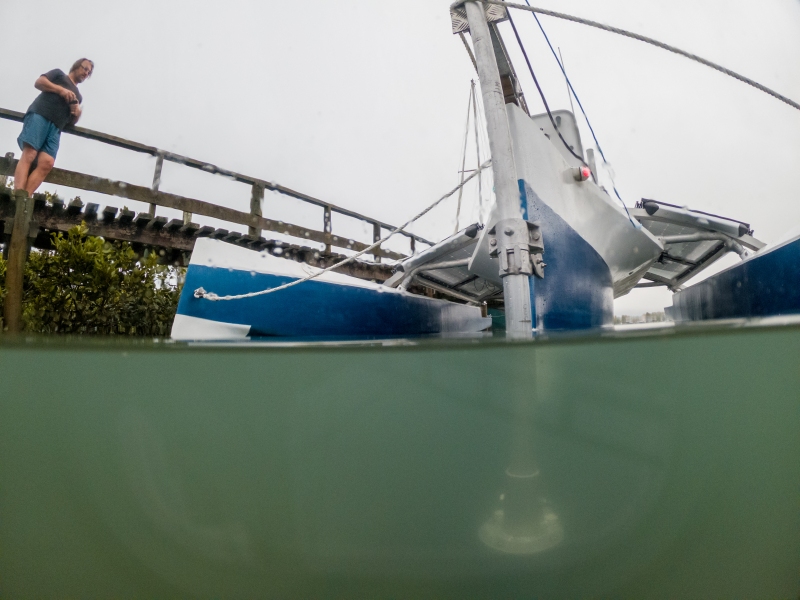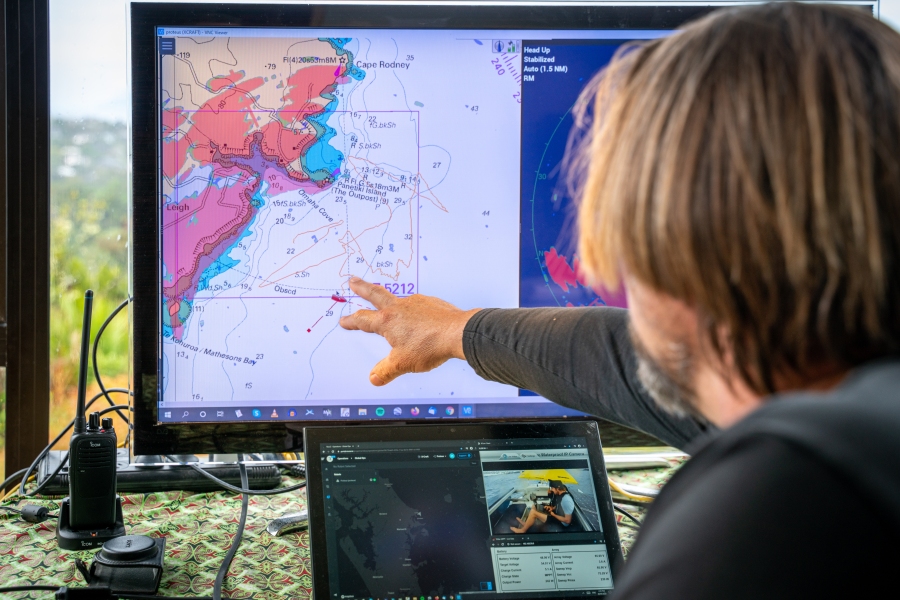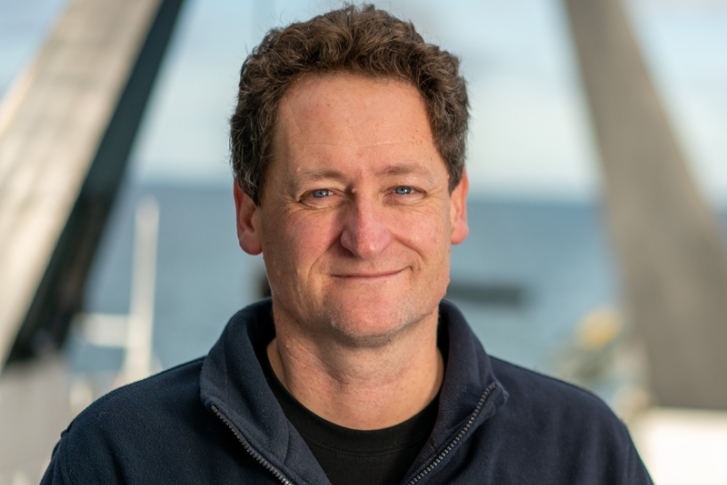A six metre-long autonomous trimaran fitted out with a battery-powered NIWA echosounder is being used at sea as part of an innovative research collaboration with specialist New Zealand drone company X-Craft Enterprises. The aim is to collect good quality fisheries acoustic data by combining autonomous surface vessels (ASVs) and echosounding technology. Fisheries scientist Richard O’Driscoll is very hopeful this type of technology will help complement the work being done on the larger research ships, as NIWA is trying to improve the way it collects information on fisheries by using alternative survey platforms.
The main advantages of using this type of autonomous vessel to do research are:
- It is quiet, minimising fish avoidance;
- It is cost-effective, potentially allowing acoustic surveys to be carried out more frequently;
- It can cover areas not covered by large research or fishing vessels (e.g nearshore and in lakes).
In its current configuration, the ASV being used by NIWA can collect good quality acoustic data in depths of at least 50 metres and at speeds of over five knots. The electrically-powered vessel can be programmed to follow a specific track, is very quiet, and is equipped with anti-collision technology. The echosounder, attached to the bow of X-Craft's sleek autonomous vessel records internally and is configured to start and stop whenever it gets power.
Although fisheries researchers are now able to combine technologies like these to collect more data at a lower cost, the autonomous vessels will never fully replace larger research ships. Physical sampling to identify what species of fish you are looking at is difficult, for instance. Potential applications for the current technology include NIWA inshore and freshwater fisheries surveys. The next phase of the project is to install and trial a deepwater acoustic system on the ASV, capable of collecting acoustic data to depths of 1000 m in open ocean environments.





